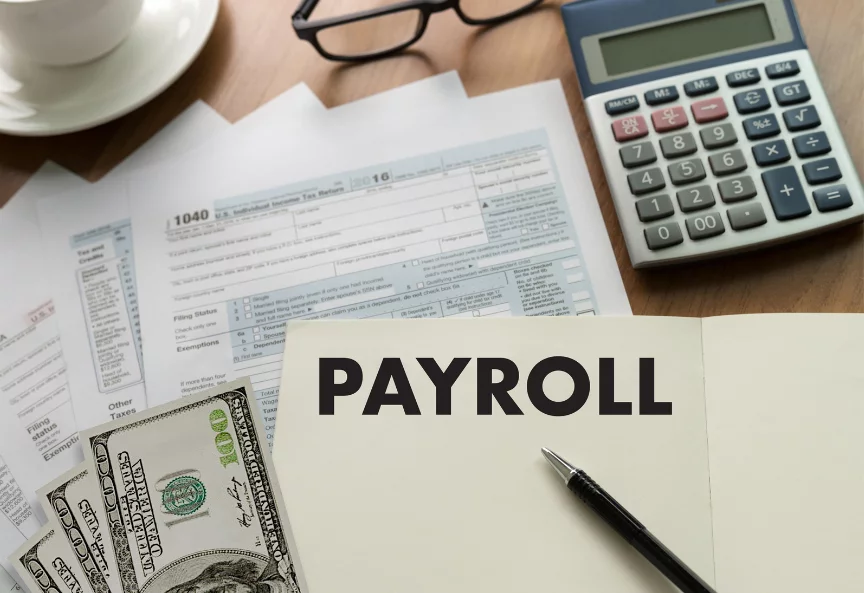Payroll tax management is something every business needs to maintain success. But understanding how taxes work can be challenging and is essential if you are a small business owner starting to manage costs. Even if you outsource the legwork to your “tax guy,” a solid understanding of payroll is crucial because if something goes wrong, you hold liability, regardless of who you hired for the job.
Yes, taxes can be pretty dull. And when they aren’t dull, they’re scary. Both state and federal governments expect you to know what you should pay and when to pay it, and they levy the full power of the state to enforce their penalties and interest if you fail to do so. Payroll taxes are incredibly daunting because the government expects you to manage the payments for the benefits it provides to your employees.
Forgetting this can bring down a series of penalties and unwanted costs for your business. Thankfully, there are plenty of guides like this one, and there is no shortage of tax professionals and accountants prepared to help explain things to you in minute detail. If you have any questions, give us a call.
What Are Payroll Taxes and Payroll Tax Management?
Payroll taxes usually refer to the money withheld from every paycheck to give to both state and federal governments. Payroll tax management is the process the company takes to manage those taxes. In some cases, when people refer to payroll taxes, they are referring solely to contributions made towards social security and Medicare, as well as additional voluntary benefits employees offer. In other cases, “payroll taxes” refers to those contributions and federal and state income taxes. The basic breakdown for federal payroll taxes (aside from the income tax) is as follows:
- Social security: 6.2 percent withheld from the employee’s paycheck, and a matching 6.2 percent paid by you.
- Medicare: 1.45 percent withheld from the employee’s paycheck, and a matching 1.45 percent paid by you.
- Unemployment tax: 6 percent on the first $7,000 of your employee’s annual income.
Things are different if you’re self-employed and file a Form 1099. In that case, you’re in charge of your self-employment taxes, which are the same thing, only that you pay for all of it. For example, putting aside 15 percent of your monthly income for tax payments should ensure that you cover your self-employment liabilities and may net you a refund at the end of the year. Payroll and income taxes are calculated individually for each employee, depending on their pay.
Payroll vs. Income Taxes
Both income and payroll taxes are paid to respective state and federal governments. The only real difference at the end of the day is that the government earmarks payroll taxes for their programs (in the case of FICA contributions, these are social security and Medicare), and payroll taxes are contributed half-and-half by the employee’s paycheck and the employer. On the other hand, income taxes come entirely from the paycheck and go towards the state or federal government’s total budget. Payroll and individual income taxes constitute the top two most significant sources of income for the government of the United States (with corporate income taxes falling far behind in third place).
Federal vs. State Payroll Taxes
When calculating total taxes pulled out of a paycheck, you can further divide those taxes into federal and state taxes and subdivide each sum into separate tariffs. For federal taxes, you’re looking at:
- Individual income tax withholding
- Social security tax
- Medicare tax
- Federal unemployment tax
For state taxes, you’re looking at:
- State income tax withholding (not all states have income taxes)
- State unemployment tax
- Local taxes
While federal and state taxes come from your business’ coffers (either employer contributions or a deduction from your employee’s paycheck), employers calculate and pay separately. Your form will have different payroll rules than the next state. The federal government’s powers are the same throughout the country, naturally.
Who Oversees Payroll Tax Management?
As the employer, you must take charge of payroll tax management and make the appropriate payroll tax payments to the government every month. If you’re specifically in charge of payroll at your company, it may be your job rather than the company head. You can make an annual payment if your company’s tax liability is deficient (less than $1,000). The tax liability will depend on your eligibility, as per Form 944.
Alternatively, use Form 941 as your guide for quarterly income withholding and payroll taxes. The IRS comes after anyone who manages employee paychecks when determining who should be penalized and held personally liable for missing payroll checks. These are called Failure to Deposit penalties. The IRS levies interest rates on liabilities and unpaid tax debt, so if you’re in trouble with the IRS, it’s essential to resolve it as quickly as possible. So it’s crucial to set up a payment plan with the IRS.
Calculating Your Taxes for Payroll Tax Management
This calculation can be a post in and of itself, as calculating your employee payroll taxes is far from a walk in the park. Most businesses rely on easy-to-use tax software to do the legwork for them, or you can avail the services of a professional business tax preparer. In both cases, you must provide the requested financial details and let the program or company do its magic. If you want to do things manually, you will need:
- Your current pay schedule (how often your employees are getting paid).
- Your preferred calculation method (percentage-based or wage bracket-based).
- Your employee’s up-to-date Form W-4.
- IRS Publication 15; your state’s guide for income tax withholding (e.g., California’s guide).
Summary of Payroll Tax Management
Payroll tax management involves tax payments constituted partially from the company’s coffers and partially from your employee’s pay, covering essential (statutory) government services on both a federal and state level, as well as other benefits as per your employment contract. Payroll tax payments are made regularly on a monthly or even biweekly basis, and missing payments – or not preparing the money beforehand – can land you in hot water with your respective tax agency, usually the IRS.
Managing payroll is one thing, but calculating it is another. You can do it the old-fashioned way using your state tax agency’s formulas or the formulas of the IRS, or you can use a third-party service or tax firm to do the work of preparing your payroll taxes. Like any other tax responsibility, due diligence is essential here. The IRS generally knows what you owe but won’t tell you. The longer the IRS or any other tax agency penalizes you, the more likely they will start pressuring your business (or you personally) with mounting penalties and tax collection actions.
So, you need to figure it out the right way and hope you’re making the proper payments to avoid a late fee or penalty down the road. Managing personal taxes can be a pain. Collecting the taxes of a business, regardless of how small or large, is even more challenging. It’s okay if this isn’t your forte – but it is your responsibility. Find the right tax professional to work with, and let them walk you through the process of preparing your payroll and income taxes before they’re due.

